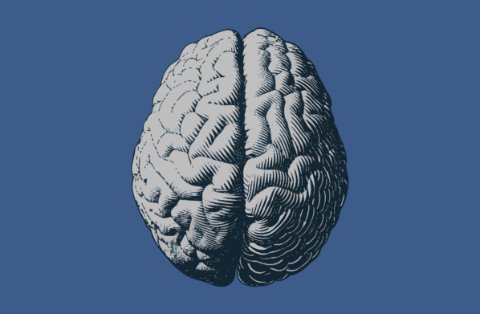The study is the brainchild of undergraduate student Devin Seward from TCD’s School of Biochemistry and Immunology.
Researchers from Trinity College Dublin (TCD) have discovered that nanoplastics damage the cell’s mitochondria, possibly leading to a rise in neurodegenerative diseases.
The study was led by undergraduate student Devin Seward and Dr Gavin Davey from TCD’s School of Biochemistry and Immunology. Seward came up with the idea for the project in 2023, during his time as a neuroscience degree student.
Produced when larger plastics break down in the environment, polystyrene nanoplastics (PS-NPs) are smaller than microplastics. Previous studies have detected PS-NPs in multiple organs in the body, including the brain, raising concerns about their negative impacts on the body.
To understand how these plastics affects brain function, the research team studied the mitochondria in rat brain tissue. Mitochondria, known as the powerhouse of the cell, is critical for producing the energy needed for brain function. Dysfunction of the mitochondria is a feature of neurodegenerative diseases such as Parkinson’s and Alzheimer’s.
By isolating mitochondria from brain cells, the researchers demonstrated that exposure to PS-NPs specifically disrupted the “electron transport chain”, the protein complexes that work together to help generate cellular energy in the form of ATP (adenosine triphosphate).
“We were surprised at how potent the effect was,” Dr Davey told the Irish Times. “The nanoplastics seemed to target the electron transport chain, a key part of the mitochondria’s energy production process.”
The study suggested that the amount of nanoplastics in our environment is enough to impair bioenergetic function in the long term. It also found that nanoplastics disrupted the communication between brain cells, a process vital for learning and memory.
“Importantly, the rise of synthetic plastics in the mid-20th century coincided with an increased global exposure to nanoplastics, so this newly discovered mitochondrial mechanism of nanoplastic-induced neurotoxicity may therefore help to explain why rates of neurodegenerative diseases have risen in recent decades, likely adding an environmental dimension to the known genetic and lifestyle risk factors,” Davey said.
The findings have been published in the Journal of Hazardous Materials: Plastics.
Seward, who has just started a PhD in neuropharmacology at TCD, added, “Coming up with this idea and then being able to develop it in Dr Davey’s lab with the support of the Laidlaw Foundation has been an incredible experience.
“It has given me the opportunity to contribute to important research on environmental health at an early stage in my career, and it’s exciting to see our findings published.”
Suhasini Srinivasaragavan
This article originally appeared on www.siliconrepublic.com and can be found here
Researchers from Trinity College Dublin (TCD) have discovered that nanoplastics damage the cell’s mitochondria, possibly leading to a rise in neurodegenerative diseases.
The study was led by undergraduate student Devin Seward and Dr Gavin Davey from TCD’s School of Biochemistry and Immunology. Seward came up with the idea for the project in 2023, during his time as a neuroscience degree student.
Produced when larger plastics break down in the environment, polystyrene nanoplastics (PS-NPs) are smaller than microplastics. Previous studies have detected PS-NPs in multiple organs in the body, including the brain, raising concerns about their negative impacts on the body.
To understand how these plastics affects brain function, the research team studied the mitochondria in rat brain tissue. Mitochondria, known as the powerhouse of the cell, is critical for producing the energy needed for brain function. Dysfunction of the mitochondria is a feature of neurodegenerative diseases such as Parkinson’s and Alzheimer’s.
By isolating mitochondria from brain cells, the researchers demonstrated that exposure to PS-NPs specifically disrupted the “electron transport chain”, the protein complexes that work together to help generate cellular energy in the form of ATP (adenosine triphosphate).
“We were surprised at how potent the effect was,” Dr Davey told the Irish Times. “The nanoplastics seemed to target the electron transport chain, a key part of the mitochondria’s energy production process.”
The study suggested that the amount of nanoplastics in our environment is enough to impair bioenergetic function in the long term. It also found that nanoplastics disrupted the communication between brain cells, a process vital for learning and memory.
“Importantly, the rise of synthetic plastics in the mid-20th century coincided with an increased global exposure to nanoplastics, so this newly discovered mitochondrial mechanism of nanoplastic-induced neurotoxicity may therefore help to explain why rates of neurodegenerative diseases have risen in recent decades, likely adding an environmental dimension to the known genetic and lifestyle risk factors,” Davey said.
The findings have been published in the Journal of Hazardous Materials: Plastics.
Seward, who has just started a PhD in neuropharmacology at TCD, added, “Coming up with this idea and then being able to develop it in Dr Davey’s lab with the support of the Laidlaw Foundation has been an incredible experience.
“It has given me the opportunity to contribute to important research on environmental health at an early stage in my career, and it’s exciting to see our findings published.”
Suhasini Srinivasaragavan
This article originally appeared on www.siliconrepublic.com and can be found here



